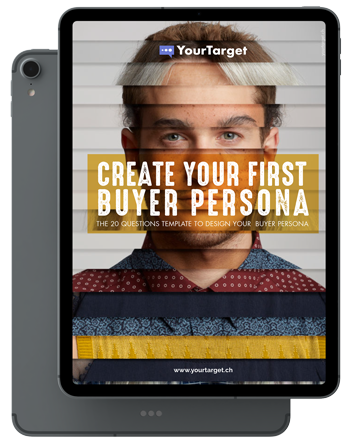To nurture or not to nurture? That is the question. The most obvious answer is to nurture!
Nurturing is a fantastic strategy that helps you transform a lead into a customer.
This transition is fundamental in an inbound marketing strategy and is a crucial factor in making the results of your efforts tangible and measurable.
If you’ve done your homework properly, you’ve already collected some qualified leads, and you need to develop a strategy to push them furthermore in the Buyer’s Journey.
The fashion industry, along with the food and the leisure ones, remains the biggest generator of online content and aims to conquer even more clients.
The inbound marketing methodology, on the other hand, is a great way to:
- Engage with your potential customers;
- Produce quality content;
- Increase your revenue;
- Automate some internal processes which will help you optimize your efforts and resources.
But when it comes to the importance of lead nurturing let’s talk numbers:
- According to Market2Lead, 25% of “nurtured” leads have purchased from a brand faster, because of the previous engagement with the business;
- Between 5% and 25% of your website’s new visitors are ready to buy from you, while the remaining are still researching;
- 50% of qualified leads are not prepared to make a purchase, and if they feel pressured to do so, are more likely to never engage with your business.
Now let’s have a look at 3 ways an inbound strategy can help you nurture your lead and achieve your goals.
3 ways to do lead nurturing thanks to Inbound Marketing
1. E-mail marketing
E-mails are still an amazing tool to engage with your customers and nurture your leads. But first, let’s make a little distinction. Newsletters and nurturing e-mails are not the same.
The first ones, in general, are designed to communicate with people who already know your brand or have even made a purchase in the past.

As a comparison, nurturing e-mails are part of an inbound marketing strategy that helps your leads become more familiar with your business and eventually your products.
In this scenario, an e-mail marketing strategy has to be:
- Customer-centric;
- Content oriented;
- And to add value.
A simple example might be to offer weekly fashion advice to your leads or even highlight some of your blog content.
To do so, you need to be very familiar with your Buyer Persona, her/his needs and the doubts that he or she has to face daily, according to the industry you operate into.
Just keep in mind the acronym Always be Helping instead of Always be Closing.
The core of Inbound Marketing is to be helpful and to offer tailored solutions and content to your potential customers.
2. Social media
Social media platforms are still the primary channels for fashion brands who aim to engage with customers, grow their clients base, and even nurture leads.
For you to succeed in this mission, let’s consider one of the main principles of consumer’s behavior, emotions. It’s not the best way to express this thought, but you have to leverage your potential customers’ sentiments.
The feeling of inclusivity and being part of a community are both elements that can be useful to nurture your leads effectively.
Let’s look at a practical example. Jenna has an e-commerce for maternity clothing and new moms who want to be comfy without missing out the latest fashion trends. Also, one of the core factors of Jenna’s brand identity is that she devolves 5% of her earnings to local kindergartens and invests in charity organizations for children.

Through the use of a bot for Facebook Messenger, for example, Jenna developed a storytelling strategy that shows all the great activities she does with that 5% percent of her revenue. Also, she doesn’t miss the chance to deliver some great content that revolves around maternity and the special relationship between mother and child.
In this way, Jenna not only highlights her business’ brand identity, she also nurtures her leads, pushing them to become buyers eventually.
Collecting valuable information about her audience and engaging even more with her leads are also perks of this kind of strategy.
3. User-Generated Content
Online communities literally exploded in the past couple of years, and we’ve seen how even Lush still relies on this kind of strategy.
Social media communities once again have to be developed to be customer-centric and content oriented.
Gathering helpful information about your Buyer Persona is the main aim of an online community, but this virtual place revolves a lot around user-generated content. And what better way to nurture your leads than high-quality content produced by your current clients?
In general, UGC is proof that your product and service are appreciated and actually satisfy your clients.
Investing time and resources in managing and supervising communities on social media is an outstanding strategy to involve your new leads.
A couple of considerations about lead nurturing and inbound marketing
Marketing automation
Marketing automation means to automate some of the actions that take place within your organization, which include the whole communication and nurturing process with your leads.
A marketing automation software, for example, helps you segment your leads and offer tailored content according to where they’re in the buyer’s journey.
To nurture a lead efficiently means to rely on this kind of tool, which will support you in reaching your goals, transforming this lead into a client that eventually might become a promoter of your brand.
High-quality content
As we’ve seen on a number of occasions, inbound marketing is about excellent and reliable content.
Online consumers want to experience a personalized customer’s journey and to do so, you need to know your potential Buyer Persona.
Gathering this kind of information might be tricky, but using the right tools is a good starting point.
These tools might include:
- tools for social listening
- Google trends
- analytics tools
- being part of online communities.
Are you wondering how to develop your first Buyer Persona?
Download our free template and start designing your potential customer today!

